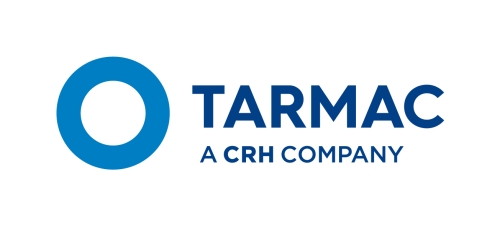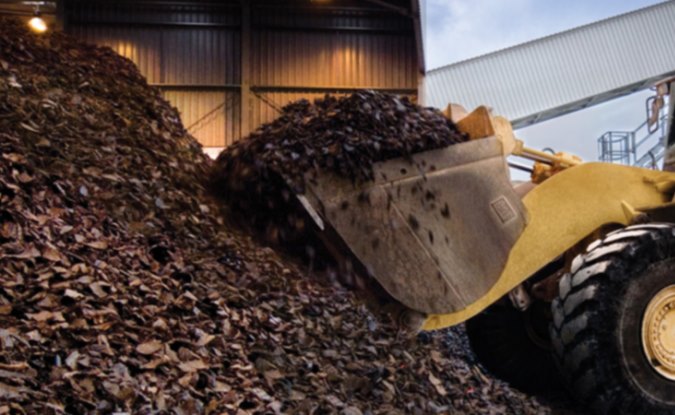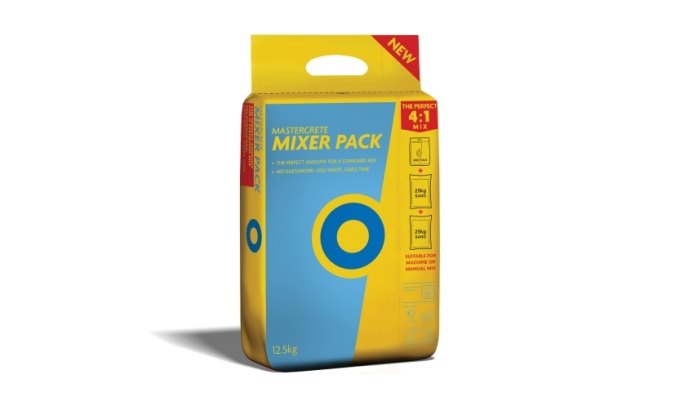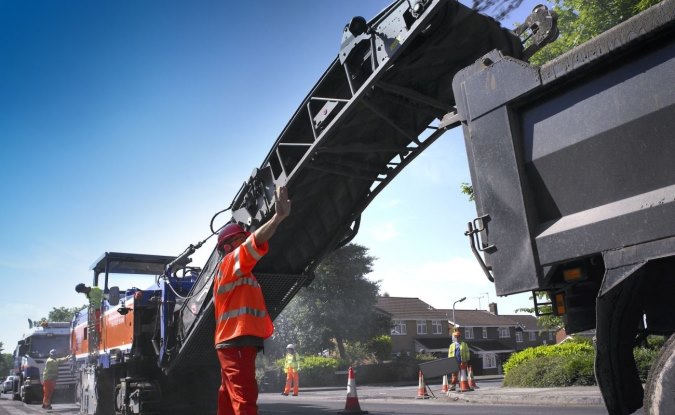Resource Efficiency
COMMITMENT: ACCELERATE THE TRANSITION TO A CIRCULAR ECONOMY
Supporting a more circular economy, in which waste is eliminated and resources remain in high value use for as long as possible, either for the original purpose they were designed for, or for something new is critical for the long term efficiency and sustainability of our industry and UK buildings and infrastructure. This means designing out waste at every stage of the product life-cycle and developing products with greater durability, performance and longevity. By doing this, we reduce demands on the planet and ensure that the materials we need to supply our customers are available to us on a sustainable basis.
2020 MILESTONE: Recycle over 10 million tonnes a year of waste and secondary materials from other sectors
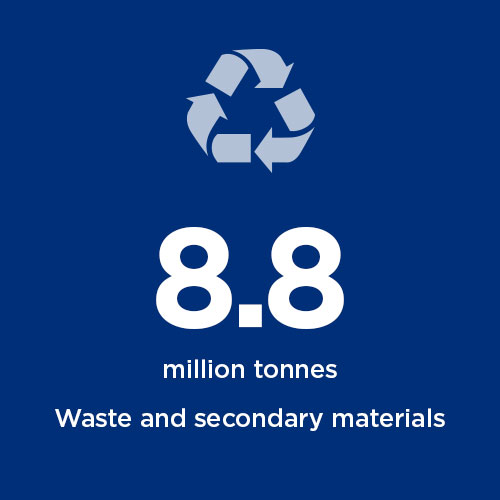
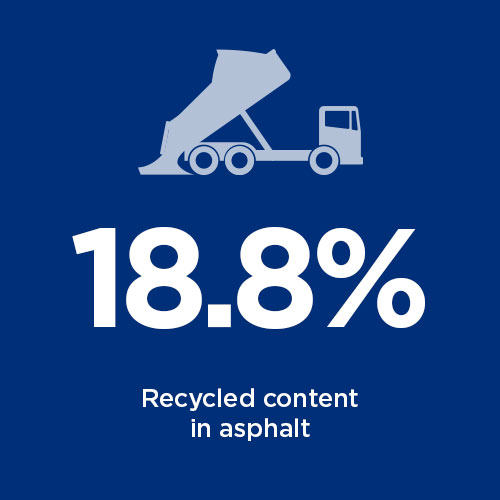

Circular progress
We are already making a significant contribution to the transition to a circular economy by keeping resources in use. In 2016, we used 8.8 million tonnes of waste and secondary materials from other sectors as raw materials in our products and as fuel for our manufacturing processes. And sent just 46,082 tonnes of waste to landfill in 2016, this means we are a significant net user of waste, using more of other people’s waste than the waste we produce ourselves.
The concept of a circular economy has continued to gain momentum in the UK in 2016 – not least through the government’s positive response to a European Commission public consultation on the topic. We are receiving increased interest from customers, building collaborative relationships with our supply chain and are continuing to develop our products and solutions to help them with resource-efficient design and waste reduction initiatives during the construction, use and end of life phases of both buildings and infrastructure.
Cutting waste
Our support for the circular economy starts with designing out waste from our own operations. Where feasible, waste generated by our operations is reused or recovered internally. We also drive down waste by improving our processes and by being more efficient in the way we use materials.
Different kinds of waste can be used in various ways as secondary or recycled materials for use in our processes and products. For example, in our Tunstead cement plant we use clay washings from the quarry and abatement dust from the lime operations as raw materials. We also use by-products from our operations to build internal roads in quarries, or in our restoration schemes, replacing the need for other materials to be imported for these uses.
Total waste generated (hazardous and non-hazardous)
| Type | Tonnes | % |
| Hazardous waste to landfill | 13,961 | 4.65% |
| Non-hazardous waste to landfill | 18,386 | 6.12% |
| Inert waste to landfill | 13,735 | 4.58% |
| Hazardous waste recycled | 4,062 | 1.35% |
| Non-hazardous waste recycled | 127,694 | 42.54% |
| Inert waste recycled | 122,308 | 40.74% |
| Total | 300,146 | 100% |
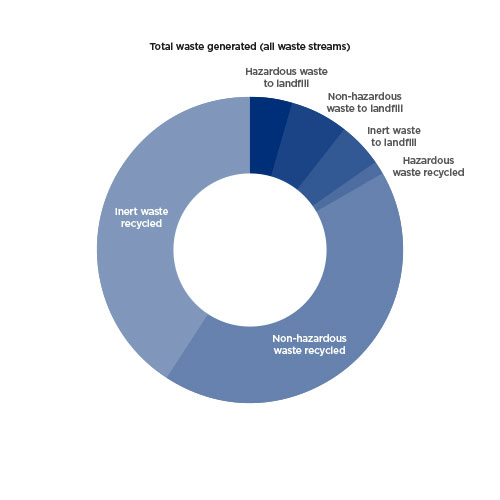
Packaging waste
Most of our products are delivered in bulk to customers, which means we use relatively little product packaging. But where packaging is required, we try to minimize it. In 2016 , for instance, we launched an innovative range of smaller 12.5kg pre-packed cement bags. Designed with builders and the DIY market in mind the new bags aim to reduce on site wastage, by around 5% and help to make carrying the product easier and safer. (Link case study: New product in the mix for cement)
Read our case study: Mastercrete innovation aims to cut waste – New 12.5kgs bags
Our total packaging obligation in 2016 under the producer responsibility scheme was 12806 tonnes, the largest components being plastic (3765 tonnes) and wood (8132 tonnes).
Packaging by type
| Packaging Waste Supplied | Paper | 1,818 |
| Plastic | 15,426 | |
| Wood | 25,609 | |
| Packaging Obligation | Paper | 909 |
| Plastic | 3,765 | |
| Wood | 8132 | |
| General Recycling | 2,770 | |
| Recovery | 532 |
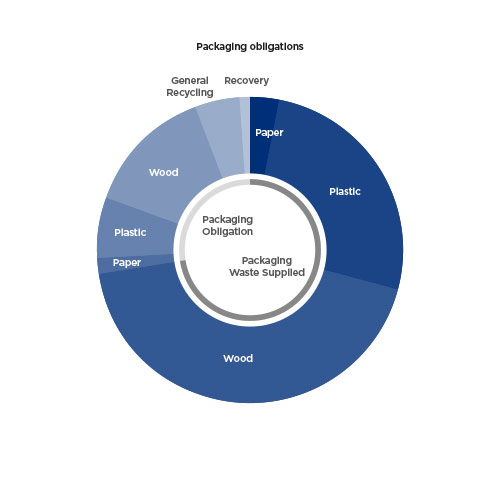
Recycled aggregates
We operate 44 recycling depots across the UK to process construction, demolition and excavation waste generated by other businesses. In this way, in 2016 we produced 1.8 million tonnes of recycled aggregates for reuse and are one of the largest recyclers of construction and demolition waste in the UK.
Waste as fuel
In our cement manufacturing operations we use waste as a fuel and by-products from other industrial processes as raw materials, such as slurry from the chemical stone washing plant, lime kiln dust from our lime kilns, gypsum waste such as plasterboard off-cuts and iron waste from a range of other industries.
Using waste and secondary materials in concrete and asphalt
Our target is to achieve 25% recycled aggregate content in concrete and 20% in asphalt by the end of 2020. We are working towards these targets partly by investing in new plant but also by identifying new sources of recycled aggregates.
In 2016 we increased the amount of old road surfaces (Recycled Asphalt Planings or RAP) we reused in new asphalt products to 737,000 tonnes, representing 18.8% of volume produced. We’ve continued to invest in recycling equipment at our asphalt plants and this will help to further increase the recycling of old road surfaces in 2017 and beyond.
Read our case study: Record breaking use of RAP
During the year the proportion of recycled and secondary aggregates used in our readymixed concrete operations remained low (<1%) as it is technically and economically more feasible to recycle such aggregate in other ways. However, we use ground granulated blast furnace slag (GGBS) from the iron and steel industry and fly ash from coal-fired power stations as cement substitutes in concrete production. Tarmac operates a number of businesses to provide quality fly ash from coal fired-power stations as a quality controlled secondary cementitious material for use in cement and concrete. With the UK Government announcement that it intends to close coal-fired power stations by 2025, fly ash availability from UK sources will be under pressure. As part of a global business, Tarmac has secured long term supplies of fly ash and GGBS for our cement and concrete products through our European network.
We are also increasing the amount of recycled materials used as constituent materials in our building products business. In 2016, around 290,000 tonnes of the material we used to make concrete building blocks came from recycled sources such as pulverised fuel ash, furnace bottom ash, and glass. We are also looking at ways of reusing crushed concrete in some of our products.
Doing more with less
As part of our commitment to supporting a circular economy, we have been encouraging supplier engagement early in a project’s design phase so that we can help design and select the most sustainable options for the project. For example, working with Costain on the Heysham to M6 bypass in Lancashire we were able to offer an alternative road design and by working closely throughout the project we cut aggregate demand by 200,000 tonnes (23%), concrete by 9,000 m3 (26%) and generated zero mineral waste.
We also continue to explore ways in which we can design new products that are both more durable and can be reused or recycled more readily, such as the use of recycled asphalt to make new roads. We are also the first company in our sector to have launched specific Building Information Modelling (BIM) data related to our products which means that in future when these materials come to the end of their current life they can be more readily reused or recycled as their properties and performance will be known and available.
Conserving water
Water is essential for our operations and as UK populations increase and the effects of climate change start to impact through periods of warmer weather, water availability will be under increasing pressure. Water conservation therefore forms an important part of our resource efficiency programme and our efforts to move to a more circular economy.
In previous years we’ve introduced water management plans at our sites as part of our progress towards our target to cut abstracted and mains water by 25% by 2020. The new plans analyse the movement, abstraction, discharge and use of water at a site, identifying opportunities to reduce water use as well as risks posed in terms of water shortages, floods and pollution incidents.
During the year we used a total of 16.06 million cubic metres of water, of which 13.9million cubic metres was abstracted from groundwater and surface water sources , 1.4million m3 from potable water supply and a little over 600,000 m3 derived from recycled water systems. This an increase in consumption on previous years and is largely due to more accurate reporting and collation of data.
In 2016 we were actively involved in a sector wide water working group and helped to inform and develop a sector strategy to water management through our involvement in the Mineral Products Association (MPA) which will be released in 2017.
